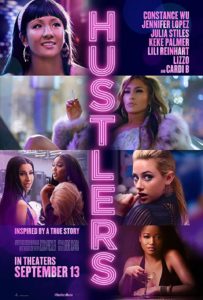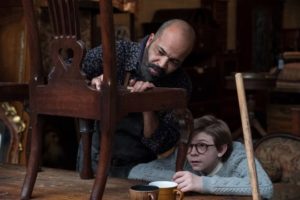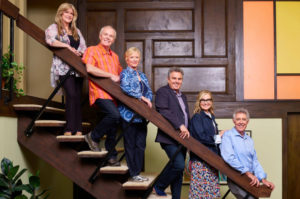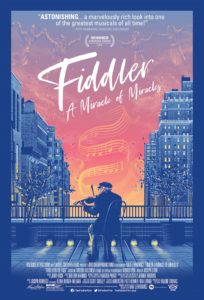Dowton Abbey Recap
Posted on September 14, 2019 at 8:13 pm
If you need to be brought up to date on Downton Abbey before seeing the movie next week, here’s a handy recap.
And for background on the real-life story behind the castle on the show:
Posted on September 14, 2019 at 8:13 pm
If you need to be brought up to date on Downton Abbey before seeing the movie next week, here’s a handy recap.
And for background on the real-life story behind the castle on the show:
Posted on September 12, 2019 at 5:57 pm
B +| Lowest Recommended Age: | Mature High Schooler |
| MPAA Rating: | Rated R for pervasive sexual material, drug content, language and nudity |
| Profanity: | Very strong language |
| Alcohol/ Drugs: | Drinking and drugs |
| Violence/ Scariness: | Some peril and scuffles, very risky behavior |
| Diversity Issues: | Gender issues |
| Date Released to Theaters: | September 13, 2019 |
| Date Released to DVD: | December 9, 2019 |

Talented writer/director Lorene Scafaria (“Nick and Norah’s Infinite Playlist,” “The Meddler,” “Seeking a Friend for the End of the World”) has made an honest but warmly sympathetic look at the real-life story of small-time crooks who decided to design their own form of retributive justice and also steal some money. “Hustlers” is more about their friendship than their crimes, and she tells the story of women who are objectified as a job without letting us objectify them, which is not easy but which is very important.
That begins with a superb cast: producer Jennifer Lopez as Ramona, the maternal ringleader, “Crazy Rich Asians” star Constance Wu as Destiny, the vulnerable newcomer, “Riverdale’s” Lili Reinhart as Annabelle, the soft-hearted girl with the weak stomach, and Keke Palmer as Mercedes, who is practical except about her boyfriend. The supporting cast includes breakthrough singer Lizzo and stripper-turned-pop-phenomenon Cardi B. Julia Stiles plays the reporter who is interviewing Ramona and Destiny five years later.
At the club, the strippers must pretend to be fascinated by men who want them to be obedient fantasy figures, and they must pretend not to mind when the men who run the club insist on kickbacks. Their job is to get the men to spend as much money as possible, for drinks and for special services in the private rooms.
Destiny, who is caring for the grandmother who took her in when she was abandoned by her mother, asks Ramona for advice on how to be more successful in the club. Ramona takes her in — literally. In a sweet scene on the roof of the club, the kind-hearted veteran invites the shivering newcomer to snuggle inside her fur coat. After a few lessons on pole dancing and lap dancing, Destiny begins to do better, and she is happy with the new sisterhood that feels like a family. It is the go-go hears of the derivatives era on Wall Street, and there is a lot of money to be made from the finance types that the women shrewdly categorize by net worth and vulnerability.
After the financial meltdown, though, things get tough. By then, Destiny has a baby, and with no education or experience, her options are limited. And so, it seems smart, not wrong, to go just one tiny extra step over the line to get money from men who got away with so much more. And so, they start slipping a sprinkle of MDMA and ketamine into their drinks, then running up charges on their credit cards. Pretty soon, they decide, in Marxian terms, to own the means of production and stop giving so much of the take to the club. As Annie Lennox and Aretha Franklin sang, the sisters were doin’ it for themselves. A very merry Christmas at Ramona’s apartment features luxury goods under the tree and the makeshift family as grateful and loving as any Hallmark movie finale, if Hallmark movies featured chinchilla coats and red-soled Louboutin stilettos.
Like any successful small business, the women face the challenge of scalability. They want more, so they bring in newcomers who create risk. All good things must come to an end, and usually that applies to bad things as well.
Scafaria gives us some glitz and glitter and thumping music to entice by (Lopez does a remarkable pole dance). But Scafaria wisely adds some classical themes to the score when the ladies are outside of the club, literally underscoring the bigger picture of this story. The focus here is on the characters and their relationships, doing their best to take care of their families, both the ones by birth and the ones by choice, and it is hard not to feel ourselves a part of their family by the joy in that once last dance.
Parents should know that this film includes male and female nudity and sexual situations, strippers, drinking and drug use, strong language, and some peril and violence.
Family discussion: What surprised you about these characters? How did they create the families they wished they had?
If you like this, try: “The Big Short” and the New York Magazine story about the real-life case that inspired this film
Posted on September 12, 2019 at 5:25 pm
C| Lowest Recommended Age: | Mature High Schooler |
| MPAA Rating: | Rated R for drug use and language |
| Profanity: | Strong language |
| Alcohol/ Drugs: | Drinking and drug use by adults and teens |
| Violence/ Scariness: | Terrorism and crime-related violence, drunk driving, child abuse, characters injured and killed including death of five different parents |
| Diversity Issues: | None |
| Date Released to Theaters: | September 13, 2019 |

There are three major problems with “The Goldfinch,” based on the Pulitzer Prize-winning novel by Donna Tartt. The first is that it is long, nearly two and a half hours. The second is that it is dull, so it seems much longer. And the third is that it is a mess, and not in an interesting way. It tries very hard to be many things all at once — to be meaningful, to be significant, to be dramatic, to be exciting, and to illuminate issues of grief and loss and love and identify. Most of all it aspires to be an awards-worthy film, as the adaptation of an acclaimed literary work should be. But it succeeds at none of them.
What it does have are way too many of the indicators of pretentiousness and of telling (which is what books do) instead of showing (which is what movies do, the good ones anyway). Every item on the check list gets ticked off as the film lumbers on: affectedly literary voiceovers with aphoristic sounding observations that are not especially illuminating or insightful, a pinkly pinkly piano on the soundtrack, flashbacks, and w world where even in New York City our character just keep running into each other all the time because there are only six people in the world and everyone else is just background.
Theo (Oakes Fegley as a boy, Ansel Elgort as an adult) and his mother were at the Metropolitan Museum of Art when his mother and many other visitors were killed in a terrorist bombing attack. Theo blames himself, because his mother was only there with him because she was on her way to see the principal about a bogus complaint that Theo had been smoking at school. Or, perhaps he blames himself because he lagged behind while she went on to the next room because he was mesmerized by a pretty red-headed girl. Or, it could be he blames himself just because he survived and she did not. In the chaos following the explosion, we will learn, Theo had an odd but portentous conversation with a man who was dying. And, in one of the defining moments of his life, Theo took a small, priceless painting from the museum, a picture of a goldfinch.
Theo initially stays with a wealthy, cultured family (headed by Boyd Gaines and Nicole Kidman), then in Nevada the feckless, alcoholic father who had abandoned him (Luke Wilson), then a kindly antique dealer/restorer (Jeffrey Wright) connected to the man whose death Theo witnessed in the museum and the girl who caught his attention just before the blast. He is befriended by a skinny Ukranian immigrant in his class named Boris (“Stranger Things'” Finn Wolfhard as a boy, Aneurin Barnard as an adult), who has the pale skin and unruly hair of Edward Scissorhands. Events lumber forward without any real emotional connection, only hammered-home reminders that life is fragile, grief is inevitable, and a leaf may wilt but a painting of a leaf will not, though it can be stolen.
There. I just saved you a soapy 2 1/2 hour slog capped with a preposterous shoot-out. You’re welcome.
Parents should know that this film includes terrorism and crime-related peril and violence, drunk driving, characters injured and killed including deaths of five parents, child abuse, attempted suicide, drinking and drug use by children and adults, and strong language.
Family discussion: Why did Theo take the painting? Why was the wilted leaf in the painting important? Why didn’t Boris join Theo in New York?
If you like this, try: the book by Donna Tartt and the book and movie “Extremely Loud and Incredibly Close” (also featuring Jeffrey Wright),
Posted on September 9, 2019 at 7:10 pm

You’d better sit down. The Brady kids are in their 50’s and 60’s now. And that iconic house we glimpsed in the opening credits was bought by HGTV, which has combined two irresistible ideas: rehabbing the house and getting the gang back together. All of the one-time Brady kids, the oldest one Medicare-eligible, are back together, working with HGTV’s most popular renovation experts, to make the inside of the house into something that never actually existed before — a real-life version of the “Brady Bunch” sets, even including Greg’s cool attic room. Some lucky Brady fan will win a chance to stay in the house and pretend that Alice and Carol are making dinner in the kitchen. If only Mike Brady was here to bring his blueprints.
Posted on September 8, 2019 at 5:10 pm
B +| Lowest Recommended Age: | Middle School |
| MPAA Rating: | Rated PG-13 for some thematic elements/disturbing images |
| Profanity: | Brief strong language |
| Alcohol/ Drugs: | Social drinking |
| Violence/ Scariness: | Images of pogroms and references to the Holocaust |
| Diversity Issues: | A theme of the movie |
| Date Released to Theaters: | September 13, 2019 |
 “Fiddler on the Roof” opened on Broadway in 1964 and every single day in the over half a century since then it has been performed somewhere. Even more impressive, it has been performed pretty much everywhere, and is currently back in New York with an off-Broadway all-Yiddish version directed by Joel Gray. In this engaging new documentary about the history and continuing cultural vitality of the musical based on the stories of Yiddish author Sholom Aleichem about the families in a Russian Jewish shtetl, we see productions in Japan, Thailand, and in a student production with an all-black and Latinx cast. We see Puerto Rican “Hamilton” creator Lin-Manuel Miranda singing “To Life” to his Dominican/Austrian-American bride at their reception, in a YouTube video with over 6.5 million views.
“Fiddler on the Roof” opened on Broadway in 1964 and every single day in the over half a century since then it has been performed somewhere. Even more impressive, it has been performed pretty much everywhere, and is currently back in New York with an off-Broadway all-Yiddish version directed by Joel Gray. In this engaging new documentary about the history and continuing cultural vitality of the musical based on the stories of Yiddish author Sholom Aleichem about the families in a Russian Jewish shtetl, we see productions in Japan, Thailand, and in a student production with an all-black and Latinx cast. We see Puerto Rican “Hamilton” creator Lin-Manuel Miranda singing “To Life” to his Dominican/Austrian-American bride at their reception, in a YouTube video with over 6.5 million views.
We hear the show’s creators and performers talk about what it means to them. Since the earliest part of the 20th century, Jewish composers and lyricists including Irving Berlin, Oscar Hammerstein, Richard Rodgers, Fritz Loewe, and more wrote huge hit Broadway shows about cowboys, Thai kings, an Italian mayor of New York, Pacific Islanders, and a sharpshooting hillbilly. Finally, it was time to write their own story, the story of the Jews who lived in tiny towns in Eastern Europe until anti-Semitic gangs and local governments pushed them out. And so they were ready to tell the story of their parents and grandparents, just as those stories seemed vitally important again.
So we see again what has made this story so vibrant over the decades. “What is this about?” director/choreographer Jerome Robbins repeatedly asked the show’s creators, Sheldon Harnick (lyrics), Jerry Bock (music), and Joseph Stein (book). They tried different answers — about the poor father of daughters who have their own ideas about who they should marry or about Jews struggling in a country that is increasingly hostile to them. He asked them again until they finally came up with the right answer and it was just one word: tradition. That, of course became the iconic opening song in the play.
My parents saw the original production of “Fiddler” on Broadway and bought the cast album, which our family played constantly. I played the part of the oldest daughter in a religious school production and then our daughter played the same role in her middle school version. We have all seen it many times, and my parents saw a production in Tokyo with an all-Japanese cast my parents saw, where Tevye sounded like TV. They asked a member of the audience why it was so popular in Japan and they got the same answer someone in this movie did, “Because it is so Japanese.”
The fringes on the prayer shawl and the words of the prayers may be different, but every family has had to resolve conflicts between the generations and every individual has had to face the existential question of which traditions provide a foundation of our identity and connect us to our culture and which have to be adapted or abandoned, which aspects of our culture hold us up and which hold us back.
In “Fiddler,” we see three conflicts as Tevye’s three oldest daughters fall in love. The oldest refuses an arranged marriage with an older, wealthy man and asks her father to approve her marriage to the poor tailer she loves. Then the second says she will marry the hotheaded revolutionary she loves, and she does not want her father’s permission, only his blessing. He gives it to them. But when the third daughter wants to marry a man who is not Jewish, that is something he cannot accept. Meanwhile, Russian anti-Semitism is growing, and it is no longer possible for the Jews to stay in the only home they have ever known. When the play was first produced in 1964, the world was still learning about the breadth and damage of the Holocaust (the term itself was still not widely used), and the State of Israel was just 16 years old and still perilous. The story was at the same time charmingly nostalgic, painfully topical, poignantly personal (everyone understands “Sunrise Sunset”), and meaningfully universal. The documentary shows the contributions of the extraordinarily gifted people who created the show (touchingly, director/choreographer Jerome Robbins, a Jew born Jerome Wilson Rabinowitz, was inspired in part by visiting the town his family came from, wiped out in the Holocaust), and the impact the show has had around the world, always resonating with contemporary concerns. But most of all, it reminds us of why it is so enduring simply through the characters, story, and music that will still be touching audiences in another 50 years.
Parents should know that this film has references to theatrical and historic tragedies and atrocities.
Family discussion: When did you first see “Fiddler” or hear its songs? What are your favorite traditions?
If you like this, try: the movie version of “Fiddler on the Roof” and a theatrical production — there should be one near you.